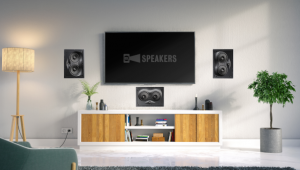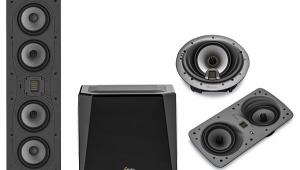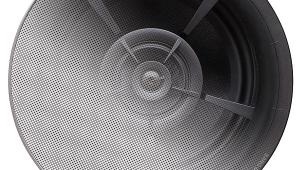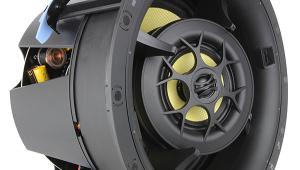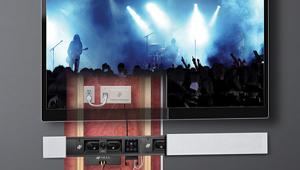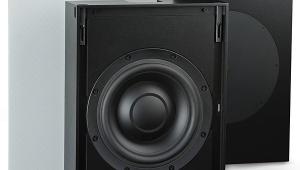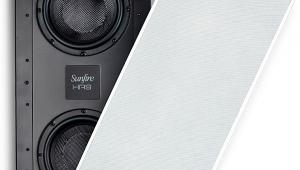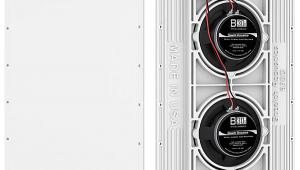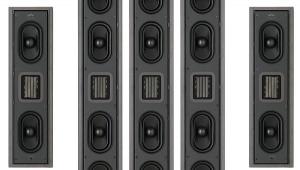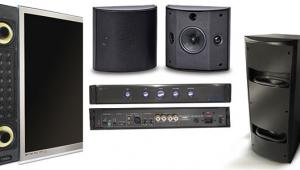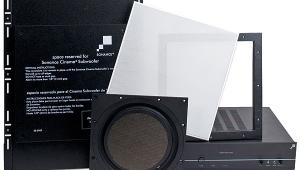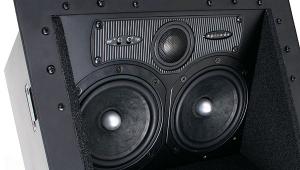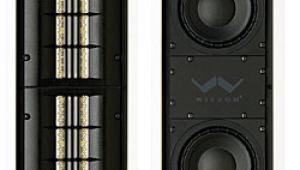Pioneer Elite EX Series S-IW691L In-Wall Speaker System
 Price: $10,197 At A Glance: Great in-wall speaker for flat-panel displays • Excellent sonic coherence • In-wall speakers with an in-room sound quality
Price: $10,197 At A Glance: Great in-wall speaker for flat-panel displays • Excellent sonic coherence • In-wall speakers with an in-room sound quality
Transcend Music Reproduction
If you’re a home theater enthusiast or audio purist who follows the high-end speaker market, you’re probably familiar with Pioneer’s line of TAD loudspeakers and their reputation for exquisite sound reproduction. It all started with the TAD Model-1, which drew rave reviews with its concentrically aligned beryllium midrange and tweeter. Priced at $45,000 per pair, they were obtainable for only the wealthiest audiophiles.
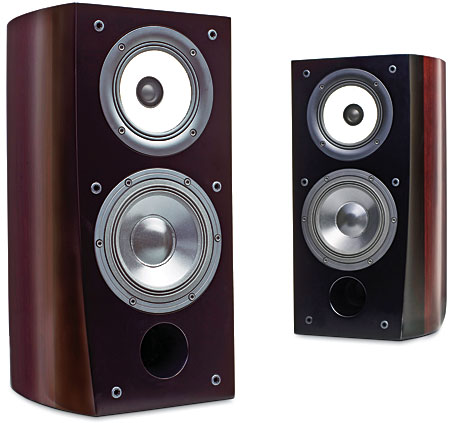
Piggybacking on the acclaimed sound quality of the TAD series speakers, Pioneer set out to design more affordable speakers to complement its assortment of audio and video components. This led to the Pioneer EX and now the Pioneer Elite EX Series speakers, a broad line of in-wall and in-ceiling speakers. The Elite EX S-IW691L is the flagship model in the line.
The S-IW691L ($1,999 each) is a three-way in-wall speaker that’s intended for home theater and multichannel audio applications. Borrowing from the TAD line, the speaker employs Pioneer’s Coherent Source Transducer (CST). CST is a concentrically aligned midrange/high-frequency driver designed to provide coherent sound quality and uniform sound coverage throughout the listening area, particularly off axis. I put the Pioneer S-IW691L in-walls to the test in an LCR speaker configuration to find out if they could re-create the same audio magic that music lovers discovered with the TAD speakers.
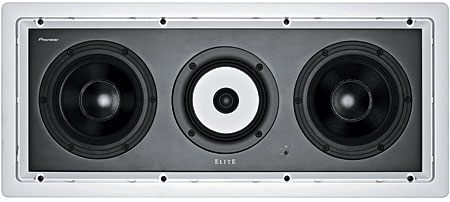
Background
First, a bit of history is helpful. When Andrew Jones, director of speaker engineering at Pioneer Electronics, joined the company more than a dozen years ago, he decided to build on Pioneer’s know-how in speaker technology. Pioneer started as a speaker company over seven decades ago and developed expertise in manufacturing beryllium midranges and tweeters over 30 years ago. But the project was reserved for professional use because of the high costs and technical challenges of working with beryllium. Beryllium is a rare metal that has desirable structural characteristics for midrange drivers and tweeters. Chief among these is a very high stiffness-to-weight ratio.
Using this as a launching point, Jones reexamined the project and developed the TAD Model-1 loudspeaker. Pioneer marketed this under the brand name TAD Home Audio as an offshoot from Technical Audio Devices, Pioneer’s professional audio division.
The TAD Model-1 featured a concentrically aligned beryllium midrange and tweeter combined with specially designed bass and midbass drivers in a rigidly designed laminated enclosure. Other speaker companies including Tannoy and KEF (where Jones was once a chief engineer) have promoted the concentric driver design. Concentric drivers produce much more consistent off-axis response than the typically spread-out arrangements that physically separate drive units have.
Historically, Japanese loudspeakers have not enjoyed great success in the U.S. This is mostly because of stiff competition from the hundreds of domestic speaker manufacturers and partly because of the differing tastes between American and Japanese music enthusiasts. The Model-1 helped change this equation for Pioneer. In 2006, the company introduced additional models at more affordable prices under the Pioneer EX umbrella, and newer models are currently in development.
Features and Design: Pioneer CST
The S-IW691L features dual 6.5-inch woofers, with diaphragms made of a composite of carbon and aramid fibers with a multiroll surround. The laminated cone material is said to provide resistance to the back pressure from the cabinet and to move cone resonances out of the operating range of the driver. The multiroll surround helps optimize the linearity of the cone’s movement in both directions.

The Pioneer CST is a 5.5-inch concentric midrange/high-frequency driver that uses a magnesium cone for the midrange and ceramic graphite compound for the 1.2-inch tweeter diaphragm. A ceramic graphite diaphragm is said to have a similar stiffness-to-weight ratio to beryllium at a far lower cost. The concentric driver is designed to physically align the center of the midrange and tweeter and control off-axis response (thanks to the shape of the magnesium midrange cone, which acts as a waveguide for the tweeter). A two-position treble contour control on the baffle adjusts the tweeter level for different room acoustic characteristics.
The Pioneer CST’s objective is to achieve sonic coherence. This is a worthy goal in loudspeaker design, but it’s difficult to define. The dictionary defines coherence as intelligible, articulate, and congruous, among other things. Loudspeakers can achieve varying degrees of sonic coherence by optimizing the dispersion patterns of the individual drivers to control interference of the sound waves coming from the different physically separated drivers. In a way, it’s almost easier to hear the absence of sonic coherence than to hear it itself. A truly coherent speaker sounds as if you’re listening to a single source for all frequencies, not multiple drivers interconnected by a crossover. In my opinion, sonic coherence is one of the most important characteristics of music reproduction.
The drivers are mounted on laminated medium-density fiberboard (MDF). Although the woofers don’t have back boxes or enclosures, the midrange is isolated in a separate chamber to prevent interaction with the woofers.
- Log in or register to post comments
